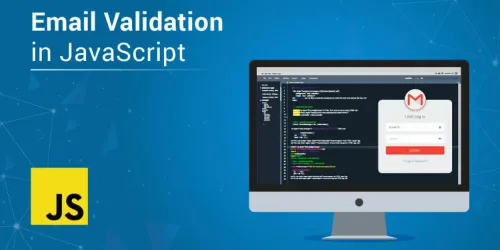JavaScript has become the backbone of modern web development, empowering developers to create interactive and user-friendly web applications. When it comes to user input validation, email addresses often steal the spotlight. While there are standard email validation techniques, sometimes, you need something more tailored to your project's unique needs. This comprehensive guide will transform you into a JavaScript custom email validation expert, allowing you to craft validation scripts that align perfectly with your requirements.
The Need for Custom Email Validation
Before we dive into the intricacies of custom email validation in JavaScript, let's explore why it's essential:
Project Specificity: Each project has its unique requirements and criteria for email validation. Custom validation allows you to adapt to these demands seamlessly.
Enhanced Accuracy: Custom validation scripts can cater to specialized email address formats or domains, ensuring data accuracy.
User Experience: Tailored validation provides users with clear guidance, reducing the likelihood of input errors and enhancing the overall user experience.
Building a Custom Email Validation Script
1. Regular Expressions (Regex)
Regular expressions are the foundation of email validation in JavaScript. They provide a powerful and flexible way to define custom email validation patterns. Here's a basic example of a regex pattern for a custom email format:
const customEmailRegex = /^[a-zA-Z0-9._%+-]+@[yourdomain]+\.com$/;
This pattern matches email addresses that belong to "yourdomain.com." You can customize it further to suit your specific needs.
2. Validating Email Input
Now that you have your custom regex pattern, you can use it to validate user input. Here's how you can implement it in JavaScript:
const emailInput = document.getElementById('email');
const customEmailRegex = /^[a-zA-Z0-9._%+-]+@[yourdomain]+\.com$/;
emailInput.addEventListener('blur', () => {
const userEmail = emailInput.value;
if (customEmailRegex.test(userEmail)) {
// Valid email address
} else {
// Invalid email address
}
});
This code snippet listens for the "blur" event on an email input field and validates the input against your custom regex pattern.
3. Providing User Feedback
User feedback is crucial for a positive user experience. You can provide feedback in real-time as users interact with the email input field. For instance, you can change the border color to green for a valid email and red for an invalid one.
4. Advanced Customization
Customization doesn't stop at the domain level. You can create regex patterns that cater to specific formatting requirements, such as hyphenated domain names, complex subdomains, or email addresses with certain characters.
Advanced Topics in Custom Email Validation
1. Dynamic Domain Validation
You can create a custom email validation script that dynamically validates email domains against a list of accepted domains stored in an array or fetched from a server.
2. Error Messages
Customize error messages based on the specific validation criteria that failed. This provides users with clear guidance on what needs correction.
3. Cross-Browser Compatibility
Ensure your custom email validation script works consistently across different web browsers by testing thoroughly and providing fallback mechanisms when necessary.
FAQs
1. Is custom email validation better than standard validation?
Custom email validation is advantageous when your project demands specific criteria that standard validation doesn't cover. It offers enhanced accuracy and user experience.
2. Are there libraries or plugins for custom email validation?
While there are libraries and plugins for email validation in JavaScript, custom validation scripts give you complete control over the validation criteria.
3. How do I validate complex email formats?
Regular expressions can handle complex email formats. You can adapt and customize regex patterns to suit your needs.
Conclusion
JavaScript custom email validation empowers you to tailor your validation criteria to project-specific requirements. By mastering the art of custom email validation, you ensure data accuracy and enhance user experience. This guide has equipped you with the knowledge and tools to create custom validation scripts that align seamlessly with your unique needs. Embrace the power of customization and elevate your JavaScript development skills.



